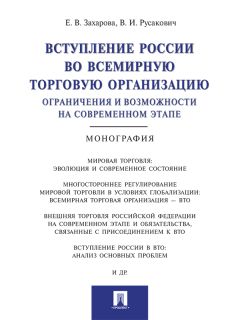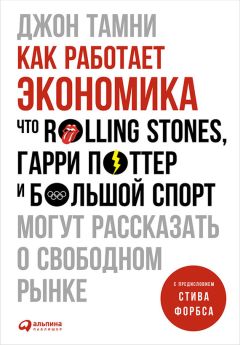Valery Bondarenko - Marketing and Pricing
Все авторские права соблюдены. Напишите нам, если Вы не согласны.
Описание книги "Marketing and Pricing"
Описание и краткое содержание "Marketing and Pricing" читать бесплатно онлайн.
Данный курс лекций предназначен для студентов и магистрантов, изучающих часть предметов на английском языке. Курс лекций составлен на основании учебной программы и образовательных стандартов для экономических специальностей УВО: «Мировая экономика», «Бухгалтерский учет и аудит», «Экономика предприятия», «Финансы и кредит». Данное пособие рассчитано на учащихся, чей уровень владения английским языком соответствует уровням Elemantary или Pre-Intermediate, то есть когда уже освоен уровень Beginner.
Speaking directly about the method of determining the capacity of the market, you should immediately call attention to the fact that this measure can be carried out on the basis of statistical information on the volume of production and sales in a particular period of time, taking into account the share of imported from abroad and exported abroad goods of this type.
C = P + R-E + I + D-M-E0 + I0,
where C – the capacity of this market;
P – domestic production of the commodity in the country;
R-remnant inventory in warehouses in the country;
E – exports of goods;
I – volume of imports of the product;
D – reduction of inventory from the seller;
M – an increase in inventory from the seller;
E0 – indirect exports;
I0 – indirect imports.
However, this method has a large proportion of errors due to the imperfections of the existing statistical reporting system. Especially this applies to those commodity markets where a large amount of wholesale and retail intermediaries operate who often distorts to conceal income, the data on the volume of production, sales and revenue.
Among other approaches to determining the capacity of the market we would like to stay on the normative. It is based on the use of consumption norms of certain goods, the sales data, the number of customers and frequency of purchases etc.
In general, the definition of the current market demand (real capacitance of the market) in monetary terms is as follows:
Q = n * q * p,
where Q – the current market demand in terms of money;
n – number of buyers of this type of product in the market;
q – the number of purchases of goods, accounting for one customer in the monitoring period;
p – the average price of this product.
Naturally market capacity calculation by using this method also has a certain degree of error. In this regard, for a more accurate calculation can be implemented in phases, breaking the totality of consumers buying into smaller segments, having more specific characteristics. For example, conducting research market of meat products, consumers can be divided into several segments according to age, believing that the average rate of consumption of meat products vary depending on the age of the consumer. This specification will provide more accurate indicators of the separate to customer segments that have a positive impact on the results of the determination of the total market volume. Natural disadvantage of this method is the difficulty with the definition of the relevant regulations and partitioning on consumer segments. In addition, all the errors that occur in the calculation of interim standards and indicators are reflected in the final result. To avoid this problem, one must use a few different techniques and then find the average value.
To have a more detailed approach to the problem of the study of market demand, it is necessary to study the impact on sales and consumption of such factors as: price, income, consumption patterns, etc. The above approach can also be used to predict the demand.
THEME 3. CONSUMER BEHAVIOR AND CUSTOMERS
1. The behavior of buyers in the consumer market
Purchasing behavior (concumer buying) is the buying behavior of individuals or families who acquire goods and services for personal consumption.
Every day consumers make a lot of decisions what to buy. Most large companies explore the process of making decisions about the purchase, to find out what, where, how and how much, when and why consumers are purchasing. Marketers are also studying this process, but they are interested in the answers to the questions what, where and how much.
However, to reveal all the secrets of buying behavior is very difficult, because the reasons for decisions are often hidden away deep in the consumers subconscious.
The main issue of marketing is how different buyers react to marketing techniques? The company who really understands how consumers react to the different qualities of the product, its price and advertising, gets a significant advantage over competitors. The starting point is a model of consumer behavior «motivation – reaction». It is clear that marketing and other incentives penetration-cabins in the «black box» of the consumer and generate a response. Marketers need to find out what is hidden in the «black box.»
Consumer market are individuals and families who purchase goods and services for personal consumption.
Marketing stimuli consist of the four elements, the so-called «Four P»: product, price, place and promotion. Other factors depend on the environment surrounding the buyer: the economy, technology, politics and culture. All of these components fall into the «black box» of the consumer and are converted into an aggregate of the observed reactions: product selection, trademark, trade an intermediary, the time of purchase and the purchase volume
The buyer’s choice is heavily influenced by cultural, social, personal and psychological factors. Although the marketer cannot affect on many of them, but by using them, it can determine the interested buyers and simulate product to meet their needs better. Marketers need to approach the process of analyzing user behavior with extreme caution.
Most companies are scrutinizing the process of deciding whether to buy in order to answer the following questions: what, where, how, how much and why consumers buy. Marketers can study consumers purchasing to answer questions about what is bought, where and how much. But the study of the causes of consumer behavior and the process of adoption of solutions is not an easy process, as the full answers are hidden in the consciousness of the consumer.
Now we are ready to consider the steps that take place when the buyer is in the purchase decision. The are five stages: awareness of the needs, information search, evaluation of options, the decision to purchase and reaction to purchase. It is obvious that the process begins long before the purchase factor is the acquisition and does not end this moment. Marketer has time to understand the process as a whole and not focus solely on the decision.
In theory, the buyer goes through all five stages at each sell. However, in practice, the consumer is often missing or reverses some stages. A woman who regularly buys the same brand of toothpaste, after realizing the problem will immediately jump to the decision to purchase, skipping stages of information search and evaluation of options. But we use the model shown in Fig. 3.3, since it reflects the logic of the consumer when he gets into a new and difficult situation.
We reviewed the steps that the buyer passes, trying to satisfy their needs. Speed of these stages varies; some of them can be omitted. Some of them may even be reversed. Much depends on the nature of consumer goods and the purchase situation.
Now we will see how the buyer acts in choosing new items. Product-novelty is a product, service, or idea perceived by potential buyers as something new. Commodity novelty is not necessarily a brand new on the market and each product can be a novelty for the buyer, who previously did not know about it. Therefore, we are interested in how the consumer finds out about it for the first time and how comes to a decision about whether to buy it. Decision process is understood as a «thinking proces through which a person from the moment when he heard about the new product for the first time, until its full adoption» and the adoption is a solution of the person to become a user of goods.
New product is the product, service or idea, perceptible by a potential buyer as something new. The adoption process is the thought process from the moment when the buyer first heard about the new product, until its full adoption.
To adapt to the new product buyer needs to take five steps:
1. Recognition. The consumer learns about the new product, but has little information about it.
2. Interest. The consumer is looking for information about a new product.
3. Evaluation. The user determines whether to acquire the product.
4. Sample. The consumer closer acquainted with the goods in order to gain a more complete understanding of it.
5. Perception. The consumer decides on a regular basis and always uses a new product.
This model assumes that the marketer engaged in product-innovation should think about how you can help the consumer at each of these stages. Suppose a company – manufacturer of televisions with a large-screen TV recognizes that many consumers, although it had an interest in its products are in no hurry to move to the stage of trial, because they do not believe in the advantages of the new model and do not want to pay the higher price. However, the same customers for a small fee gladly took a new trial on television. Hence, the manufacturer must develop a system for transmitting television temporary (trial) use with the possibility of further purchases.
It is not easy to understand the behavior of consumers, even the same country. And to understand and meet the needs of customers in different countries even more difficult. Purchasers all over the world, of course, something similar, but they are often values; attitudes and behavior are very different. Marketers working in the international market need to understand these differences and accordingly modify their products and marketing programs.
Конец ознакомительного фрагмента.
Текст предоставлен ООО «ЛитРес».
Прочитайте эту книгу целиком, купив полную легальную версию на ЛитРес.
Безопасно оплатить книгу можно банковской картой Visa, MasterCard, Maestro, со счета мобильного телефона, с платежного терминала, в салоне МТС или Связной, через PayPal, WebMoney, Яндекс.Деньги, QIWI Кошелек, бонусными картами или другим удобным Вам способом.
Подписывайтесь на наши страницы в социальных сетях.
Будьте в курсе последних книжных новинок, комментируйте, обсуждайте. Мы ждём Вас!
Похожие книги на "Marketing and Pricing"
Книги похожие на "Marketing and Pricing" читать онлайн или скачать бесплатно полные версии.
Мы рекомендуем Вам зарегистрироваться либо войти на сайт под своим именем.
Отзывы о "Valery Bondarenko - Marketing and Pricing"
Отзывы читателей о книге "Marketing and Pricing", комментарии и мнения людей о произведении.

















